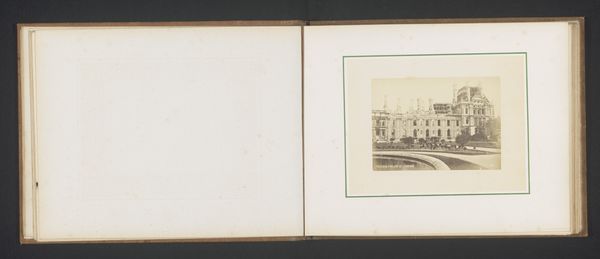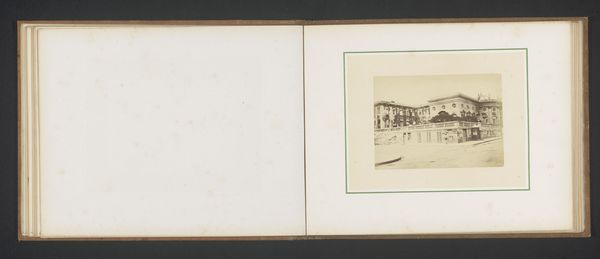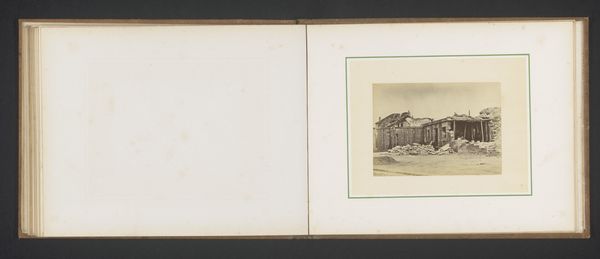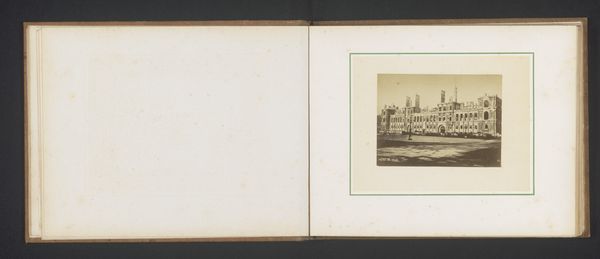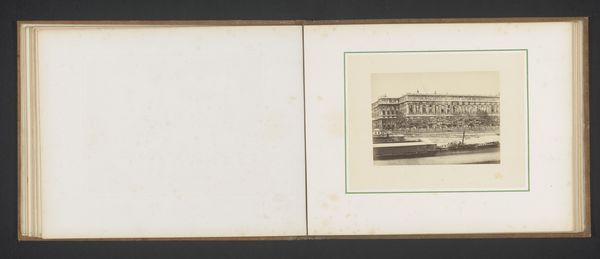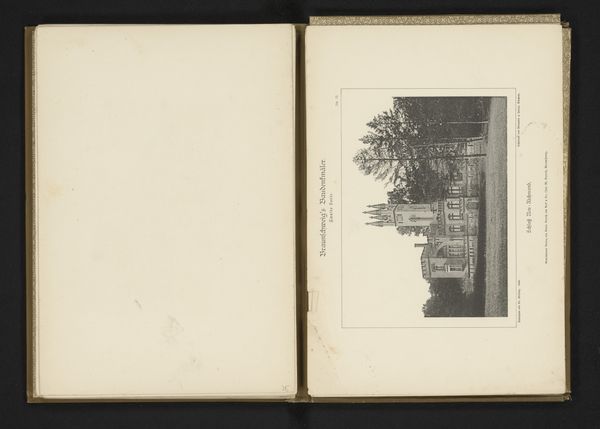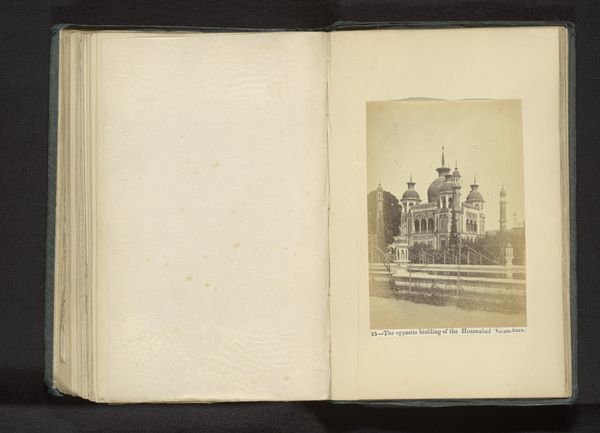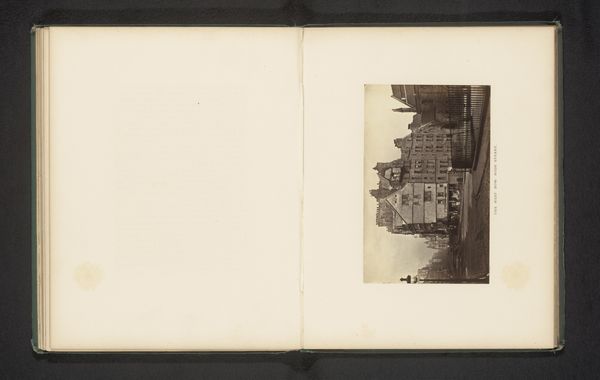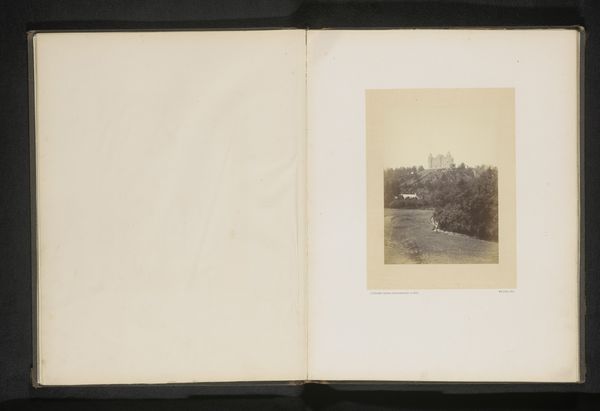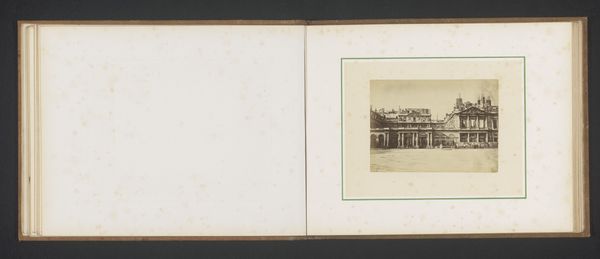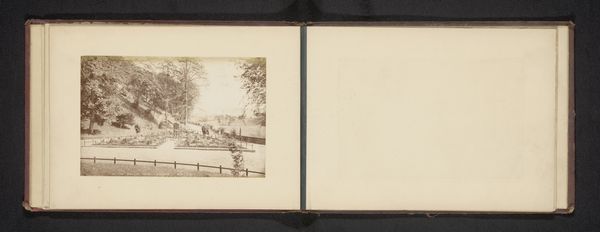
print, photography, site-specific
#
photo of handprinted image
# print
#
landscape
#
photography
#
site-specific
#
cityscape
Dimensions: height 115 mm, width 197 mm
Copyright: Rijks Museum: Open Domain
Curator: This photographic print, titled "Gezicht op Albert Institute," comes from the lens of James Valentine, likely taken before 1877. It resides here at the Rijksmuseum. What's your immediate take? Editor: Striking formality! The sepia tones lend an air of faded grandeur, like a relic of a meticulously planned, yet bygone, era. It feels both impressive and slightly melancholic. Curator: Let’s consider its materiality. This is not just a snapshot; it's a hand-printed image. Each print would have been carefully crafted, suggesting a high value placed on image production at the time. The labour involved certainly elevates it beyond simple documentation. Editor: Precisely. The choice of subject matter – the Albert Institute itself – points to civic pride and institutional self-representation. How was this building, this image of progress, meant to function within the socio-political landscape of the time? And for whom was this image intended? Curator: I wonder about the dissemination of images like these. Was this primarily for an elite class who had the leisure to view such artistic pieces? Or were they widely distributed to promote a certain kind of cultural identity? Editor: It's likely a blend. On one hand, you have the inherent exclusivity of art consumption in that era. Yet, cityscapes also serve to broadcast power, progress and civic values to a broader audience, both domestically and perhaps internationally. Consider its placement in an album – a curated collection implying narrative control. Curator: Good point. Thinking about albums as sites where personal narratives meet the publicly documented, that does challenge the way we understand the artistic and documentary potential of such artworks. Editor: This institute is staged carefully, almost heroically. What’s left unsaid reveals much too, highlighting whose stories and which architectures are deemed worthy of preservation in these public-facing images. Curator: This exploration, connecting labor, materiality, and the building itself, has certainly changed how I initially viewed the image. Editor: And considering it as a visual declaration of institutional importance rooted in a very specific historical context really heightens the sense of deliberate staging. There's an entire story behind its placement.
Comments
No comments
Be the first to comment and join the conversation on the ultimate creative platform.

